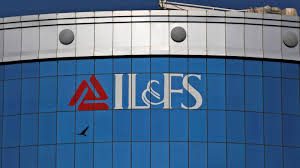$100 Website Offer
Get your personal website + domain for just $100.
Limited Time Offer!
Claim Your Website NowThe painful lessons of India’s latest corporate credit shock

Source- asia.nikkei.com
India’s longest road tunnel — running for 9 km under the foothills of the Himalayas and connecting the two biggest cities in the mountainous state of Kashmir — should be a source of national pride.
Instead, the debt-laden project has helped bring its backer to the brink of financial collapse and become a symbol of a deep-rooted economic malaise.
Infrastructure Leasing & Financial Services, India’s largest project finance company which financed and managed the tunnel scheme, has been taken over by a government-backed board after a string of defaults raised fears about its solvency. The company’s total debts of over 900 billion rupees ($12.3 billion), including 570 billion rupees owed to banks, mostly state-controlled.
IL&FS threatens to derail India’s financial markets. India’s banks and domestic mutual funds have a large credit exposure to IL&FS. At a time when the banking system is already crippled with huge non-performing loans, IL&FS’s possible insolvency would bound to shut off the taps of bank financing for private-sector investment and deal a severe blow to India’s economy. Without firm government-led intervention, the contagion effects of an IL&FS collapse could be catastrophic.
IL&FS is a three-decades-old infrastructure behemoth with a web of 24 direct subsidiaries, 135 indirect subsidiaries, six joint ventures and four associate companies. It positioned itself as India’s leading “hard and soft” infrastructure player, ranging from building tunnels and urban metro systems to providing skills services for India’s youth.
The two dominant shareholders are Life Insurance Corp. (LIC), India’s large state-controlled insurance company, with 25% and Orix, the Japanese conglomerate, with 24%. The rest is mostly owned by an employee fund, domestic banks, and the Abu Dhabi Investment Authority.
It is categorized as a “systemically important financial institution” by the Reserve Bank of India with deep, inextricable links to the financial markets and the larger economy.
By central bank regulations, IL&FS could not accept public deposits and could not access low-cost long-term funding. Instead, it financed its operations through short-term market borrowing and high-cost bank loans.
It won government infrastructure contracts by being the lowest bidder. This combination of high cost/short-term debt funding and low-return, long-term projects — was always toxic.
TIL&FS bluntly stated in its 2018 annual report, “The company is faced with challenges that call for a comprehensive re-assessment of its portfolio and strategy. Key challenges are [government] policy flip-flops, a virtual credit freeze for infrastructure projects and payment delays arising from passing the buck by relevant Authorities”
.These stresses were reflected in the company’s credit profile. By the end of the fiscal year March 2018, short-term borrowings accounted for more than one-fifths of all of IL&FS borrowings, the highest share in nearly a decade. It was evident that the company was unable to raise equity or long-term financing for its projects and had to resort to high-risk, short-term borrowings to compensate.
The Kashmir tunnel project was emblematic of these strains. Started in July 2011, the scheme was originally expected to be completed by May 2016 for 26 billion rupees. Instead it opened nearly 12 months late at a cost of 40 billion rupees, saddling IL&FS with huge extra costs and additional interest payments.
The company was promised a minimum of 6 billion rupees in annual earnings for 15 years after inauguration of the project. When it was delayed, so was the start of the income flow.
The tunnel was nearing completion in October 2016 — six months late — when the government announced demonetization — Prime Minister Narenda Modi’s misguided decision to suddenly invalidate high-denomination banknotes. The project plunged into a cash crisis and the contractors were unable to pay their laborers, who went on strike in retaliation, leading to another six months’ delay.
IL&FS has now defaulted on its loan obligations. Unless resolved quickly, the contagion can quickly spread to other asset classes and the financial markets, much like the Bear Sterns default during the global financial crisis of 2008. It is laudable that the government has recognized the gravity of the situation and has taken control of the company, as a first step. The government has reconstituted the board, management and instituted an investigation by the Serious Fraud Office.
But the real challenge is to recapitalize IL&FS to enable it to meet its immediate debt obligations of 26 billion rupees due in the current financial year. The government needs to cough up the money and not resort to lazy measures such as ordering state-owned LIC to invest, which would financially endanger more than 300 million life insurance policy holders.
If an orderly bankruptcy procedure were to be initiated, then it is likely that Orix would be wiped out of its equity holding in IL&FS. If that were to happen, it would be the third recent case of a Japanese investment in India going awry after Dai-ichi Sankyo’s disastrous pharmaceuticals deal with Ranbaxy, and mobile telecoms group NTT DoCoMo’s dispute over a joint venture with Tata Telecom.
The bulk of IL&FS assets are illiquid infrastructure projects that cannot be sold easily to meet debt obligations. The IL&FS recovery will be long and arduous, and will perhaps be the first true test of India’s abilities to manage a large financial collapse.
Indeed, it is unclear why it should be a surprise that IL&FS is now in default when the company itself acknowledged its problems candidly just a few months ago. It is unambiguously clear that, in large part, IL&FS’ woes are due to lack of proper oversight, bizarre government economic policies and improper financing patterns. Both the company and the environment in which it operated were responsible for its collapse.
The elephant in the room is the question of how should an emerging economy such as India build roads, airports, bridges and trains that it badly needs. India has experimented with public-private partnerships but not to much avail. Financing long-gestation infrastructure projects with short-term funding is the Achilles’ heel of India’s infrastructure development.
There is no easy solution. The state does not have the financial resources for these projects, longer-term financing options from bond markets are not fully developed yet, equity funding is not easily available due to the governance risks with such projects and foreign debt investment is tightly regulated.
Economic history shows that most nations built their infrastructure through state financing. India will have to deal with the twin challenges of the immediate resolution of the IL&FS crisis and the evolution of a longer-term sustainable model for infrastructure development. This is perhaps the key to catapult India from an emerging economy to a developed one.



